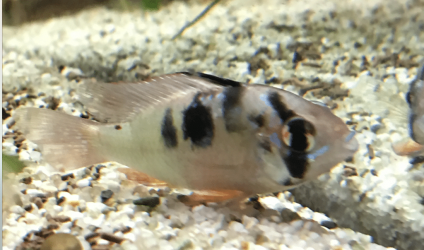Akasha72 said:
it does sound internal ... and it also sounds similar to what killed both my bolivian rams - they went pale, thin and lifeless, stopped eating and hung around in corners. The female had pop eye too. It wasn't long after that I found out about something called Hexamita. It's caused by a build up of bacteria in their guts and it's mostly caused by stress. Has there been any signs of stringy white poo? It looks like they are passing white cotton (as in sewing thread). If there has it may be Hex. It's difficult to diagnose
See what the others guys can come up with. It may not spread through the tank. If the other fish are healthy and happy this may just be a one off
All the others do seem healthy so far, and I can't say I've seen any sign of white poo, I've been looking out for this and it has been normal. But there is always a chance I could get that wrong so I won't be ruling out Hex.
fatheadminnow said:
Heavy breathing and red gills is a sign of excess ammonia in the tank. Also, heavy breathing might be a sign of lack of oxygen in the tank, as well. Although you said your ammonia is at 0ppm I think we can rule this out. What test kit are you using by chance? Swimming sideways and upside down might be a sign of some sort of swim bladder issue.
API Liquid test for ammonia and strips for the rest, I know they aren't the best but the master test kit doesn't include hardness

and I was planning to feed peas to try and address swim bladder but sadly by the time I had assessed the situation it was too late.
fluttermoth said:
Do you know the pH and hardness of your water?
Blue rams are very delicate little fish and won't last long if the water isn't to their liking; they don't adapt well if the water is too hard or alkaline, IME.
I would point out that your tank is a little too cool for them also, which could be another factor involved.
I will get these stats posted right away, and will also increase the temperature 25 is a little low, need to adjust the heater. Thanks
Byron said:
I concur with other members here. Diagnosing specific issues is extremely difficult most of the time. As you can see from the previous posts, several possibles occur with the noted symptoms.
But the first place to start is usually the water, both parameters (GH, pH and temperature) and quality (ammonia, nitrite, nitrate). Nitrate is a tad high, but this alone would not cause what you are seeing though it may be a part of the overall health of the fish; cichlids are particularly sensitive to nitrate. Temperature as fluttermoth said is too low for this species; around 27C/80F would be better for Mikrogeophagus ramirezi in any of its colour forms [obviously you have to consider the other fish, if any need it cooler then you will have issues as there is no "middle" ground sometimes. Also the GH and pH can be critical; this is a species that always is in better overall health when maintained in parameters close to those in which it was hatched/raised. Wild caught fish must have soft and slightly acidic water, but the colour varieties like the German Blue are not wild fish but commercially tank raised, so you have some room for adjustment if not excessive.
Byron.
Will get the temperature addressed right now, bring it up to 27 slowly. And I know they are sensitive little guys, I waited and waited to buy them and the male is looking his best at the moment, his colours really came out in the last few days and I'm beginning to suspect he may have been bullying the female. They did try to breed a while (month or two) ago, digging holes everywhere and defending them. But nothing recently. I will check on the water right now, but considering all the other look so healthy (for now

) I would be surprised if she was the only one affected.
Also should be noted that upon examining the body out of the water the gills were red, and I'm not sure if this was normal red or unusual. Its impossible to see in the pic I posted ufortianlty, but could it be gill flukes? I haven't seen and rubbing or flashing though so that kinda rules that out.
Finally, how can a disease (if it is a disease) show itself so late after getting them, I bought the rams and they are the newest addition to the tank, just under two months ago? I can only imagine they were both possibly infected with something and it was allowed to spread due to weak immune system from stress (bullying by the male?).
Sorry for the barrage of questions, I just really liked my rams and now I'm down to one

and I want to make sure this stops! Thank you all so much for your advice!
 )
)


 and I was planning to feed peas to try and address swim bladder but sadly by the time I had assessed the situation it was too late.
and I was planning to feed peas to try and address swim bladder but sadly by the time I had assessed the situation it was too late.